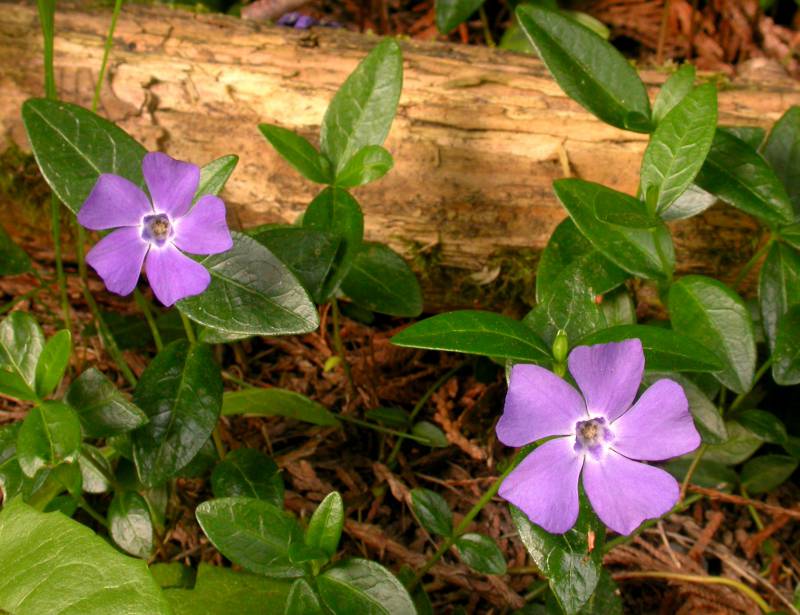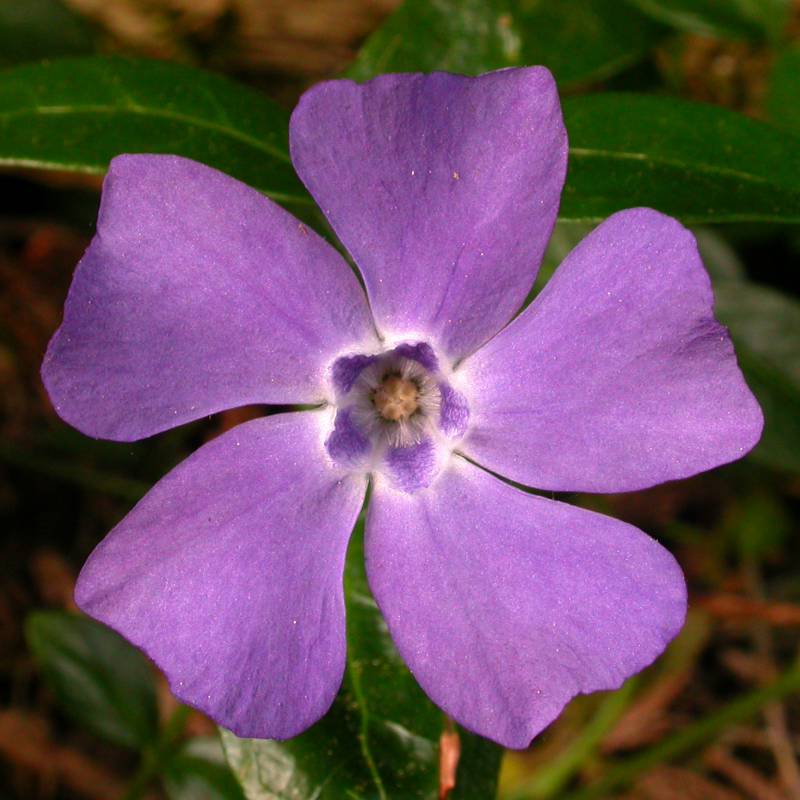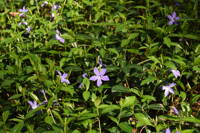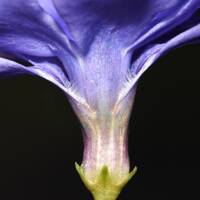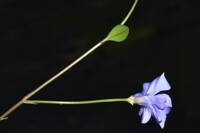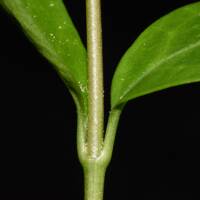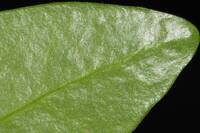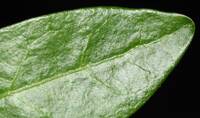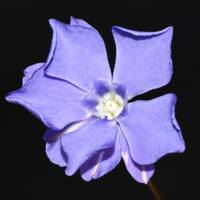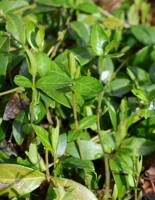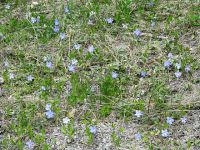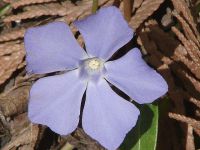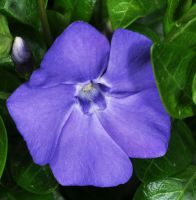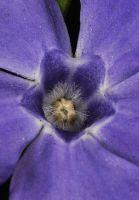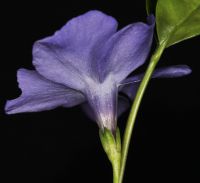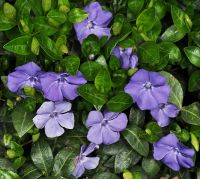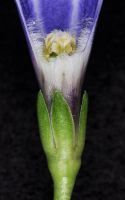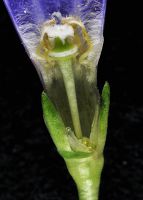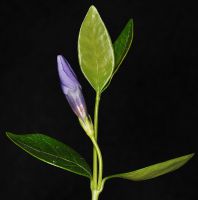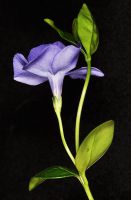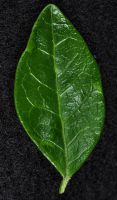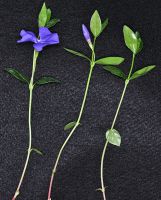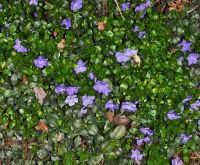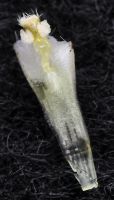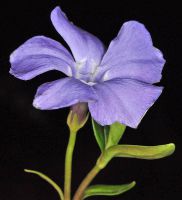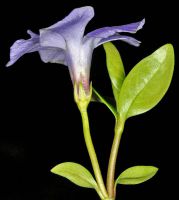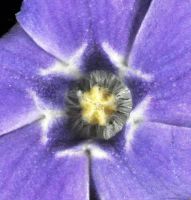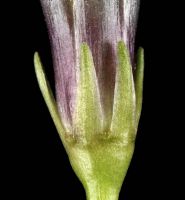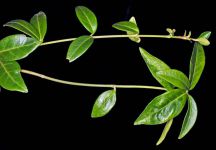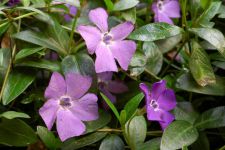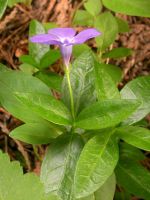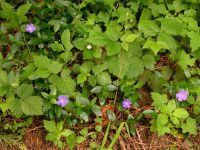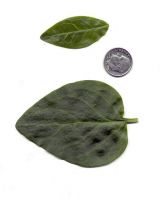Distribution: Occurring west of the Cascades crest in Washington; British Columbia to Oregon, also in Montana, and east across the Great Plains to eastern North America.
Habitat: Disturbed forest understory and edge, roadsides, wastelots, and other disturbed areas at low elevations.
Flowers: March-May
Origin: Introduced from Europe
Growth Duration: Perennial
Conservation Status: Not of concern
Pollination: Bumblebees, bees, flies
Perennial herbs with milky juice, the stems more or less prostrate, rooting, nearly glabrous.
Leaves opposite, ovate to elliptic, 2.5-5 cm. long, short-petiolate, rather leathery.
Flowers solitary in the leaf axils, on long pedicels; calyx divided nearly to the base, the 5 lobes linear; corolla blue-violet, with long, narrow tube and 5 widely-spreading, truncate to rounded lobes, 25-30 mm. broad; tube about 2 cm. long, crested and hairy in the throat; stamens 5, attached below the throat, the filaments short; style elongate, the stigma ovoid, tapering to a truncate apex; ovary superior.
Follicles elongate, forked.
Publication: Sp. Pl. 1: 209. 1753.
PNW Herbaria: Specimen records of Vinca minor in the Consortium of Pacific Northwest Herbaria database
WA Flora Checklist: Vinca minor checklist entry
OregonFlora: Vinca minor information
E-Flora BC: Vinca minor atlas page
CalPhotos: Vinca minor photos

